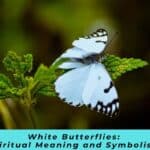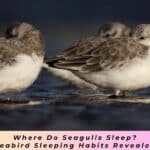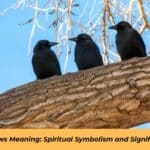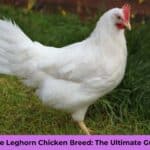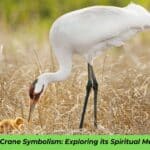Why do crows chase hawks? This peculiar aerial dance has captivated birdwatchers and puzzled scientists for years. Ever glanced up at the sky and witnessed a flock of crows, cawing and diving, hot on the tail of a majestic hawk? You’re not alone.
This avian drama, playing out above our heads, is a common sight in many parts of the world. Today, we’re diving deep into the fascinating world of crow and hawk interactions, exploring the reasons behind this behavior, the species involved, and the broader ecological implications of these high-flying confrontations.
The phenomenon of crows chasing hawks, often referred to as “mobbing,” is a complex behavior with multiple underlying causes. Understanding why crows engage in this seemingly risky pursuit of hawks requires a closer look at the intricate relationships within avian communities.
As we unravel the mystery of why crows chase hawks, we’ll discover that this behavior is not just a simple act of aggression, but a sophisticated strategy that plays a crucial role in the survival and social dynamics of these intelligent birds.
Why Do Crows Chase Hawks? The Aerial Puzzle Explained
Let’s kick things off with the burning question on everyone’s mind: Why do crows chase hawks? This seemingly counterintuitive behavior isn’t just random avian aggression. There are several compelling reasons behind these airborne altercations.
Territorial Tussles: The “Get Off My Lawn” of the Bird World
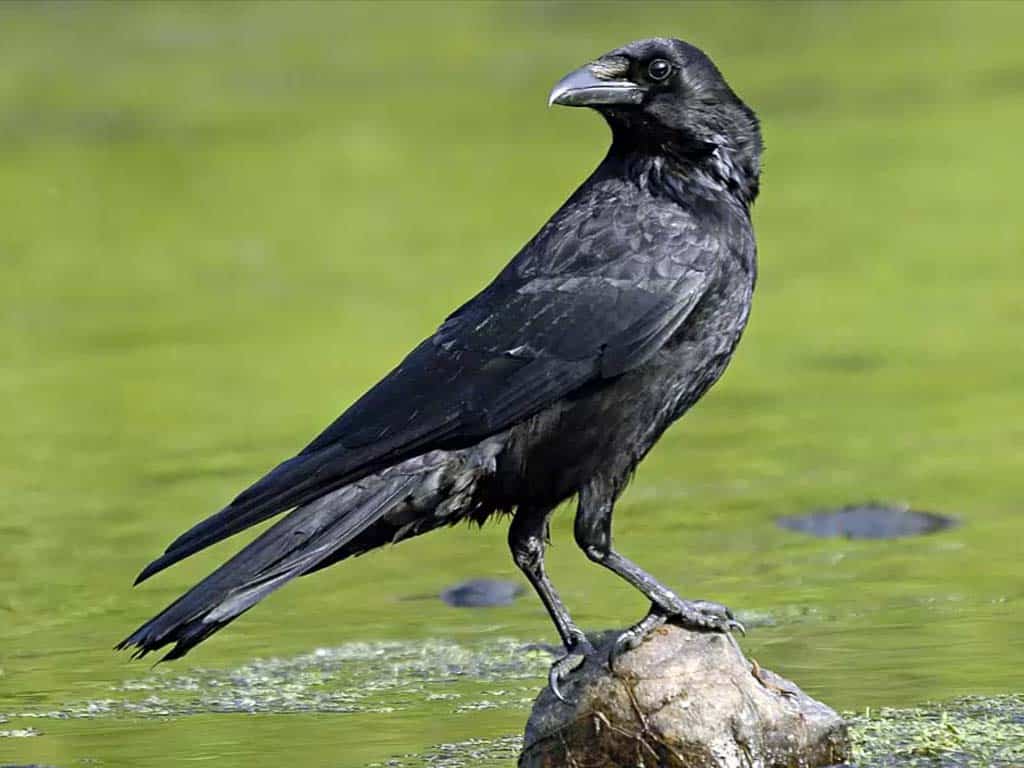
Crows are notoriously territorial creatures. They’ve got their own avian neighborhoods, and they don’t take kindly to uninvited guests. When a hawk swoops into crow territory, it’s like a stranger wandering into your backyard uninvited. The crows’ response? A good old-fashioned chase to escort the intruder out.
“Crows are the vigilant guardians of the skies,” says Dr. Kaeli Swift, a renowned corvid researcher. “Their territorial behavior isn’t just about protecting resources – it’s about maintaining the safety of their entire community.”
Food Fight: When Crows Crash Hawk’s Dinner Party
Hawks, being birds of prey, are often on the hunt for their next meal. But crows, ever the opportunists, sometimes see a hawk not as a threat, but as a potential source of food. When crows attack hawks, they might be:
- Attempting to steal the hawk’s freshly caught prey
- Hoping to scavenge any leftovers the hawk might drop
- Taking advantage of smaller animals flushed out by the hawk’s presence
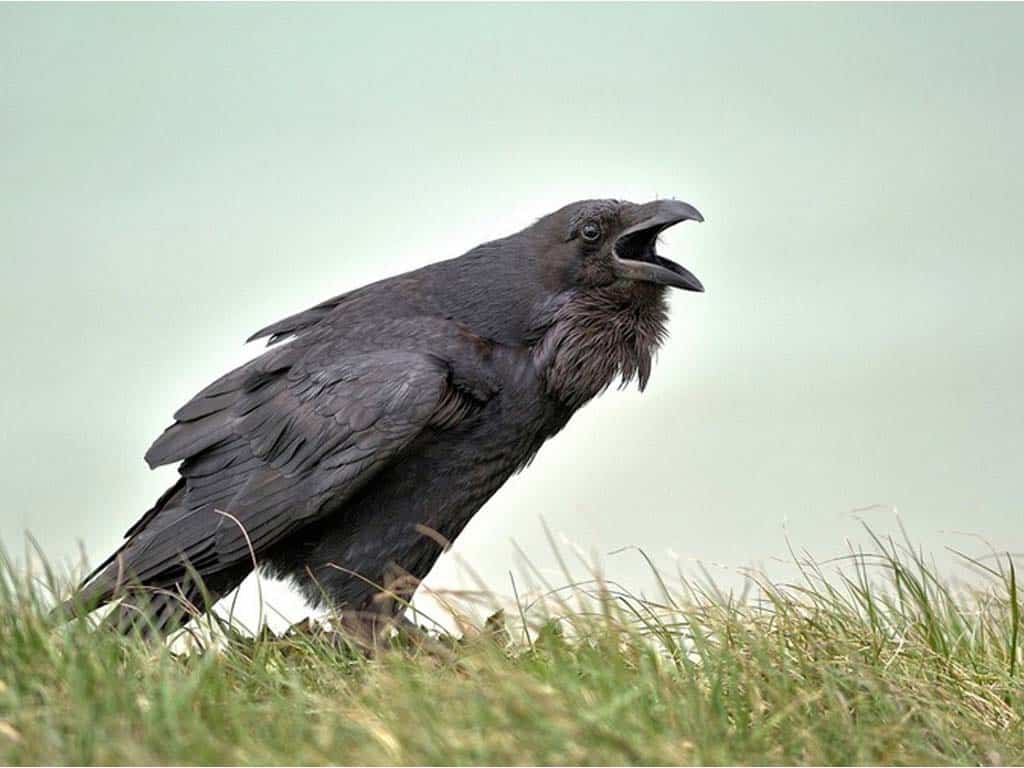
This behavior showcases the crows’ resourcefulness and adaptability in finding food sources. It’s not just aggression – it’s a clever survival strategy.
Check this out Why Don’t I Hear Mourning Doves Anymore? Reasons
Danger in the Air: Perception is Everything
While adult crows aren’t typically on a hawk’s menu, their young and eggs are vulnerable to these birds of prey. Crows have long memories and are known to hold grudges. If a hawk has previously threatened a crow’s nest or successfully preyed on crow offspring, you can bet those crows will remember and react aggressively to future hawk encounters.
Strength in Numbers: The Mobbing Mentality
One of the most fascinating aspects of crow behavior is their use of “mobbing” as a defensive strategy. Mobbing occurs when a group of crows collectively harass a predator, like a hawk, to drive it away from their territory.
| Mobbing Tactic | Purpose | Effectiveness |
| Loud cawing | Disorient and intimidate the hawk | High |
| Dive-bombing | Physical harassment to encourage retreat | Medium |
| Coordinated attacks | Overwhelm the hawk with multiple targets | High |
| Persistent pursuit | Ensure the hawk leaves the area entirely | Very High |
This collective action not only increases the crows’ chances of successfully driving away the hawk but also serves as a learning opportunity for younger crows to identify and respond to potential threats.
The Cast of Characters: Crow Species That Take on Hawks

Not all crow species are equally likely to engage in these aerial showdowns. Let’s meet some of the main corvid contenders in these high-flying dramas:
Check this out Parrots in Florida – Complete Guide To Wild Parakeets In Florida
American Crows: The Bold and the Brazen
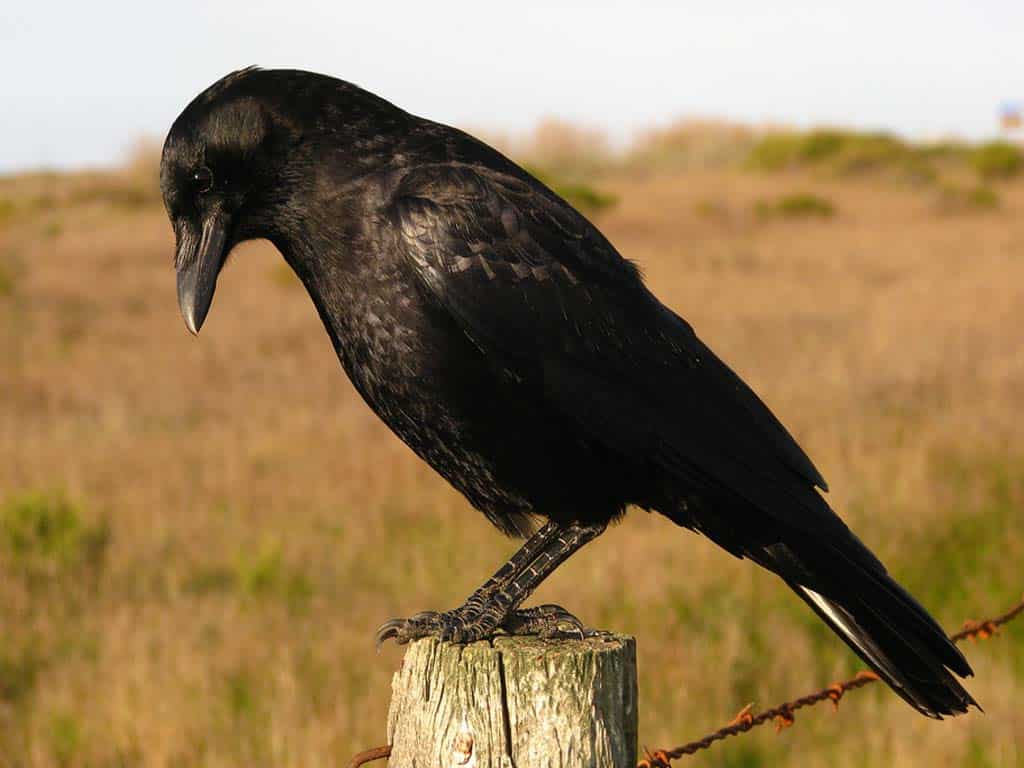
American Crows (Corvus brachyrhynchos) are perhaps the most well-known for their interactions with hawks. These adaptable birds are found across North America and are often seen in urban and suburban areas, where their encounters with hawks are frequently observed.
- Size: 17-21 inches long
- Wingspan: 33-39 inches
- Habitat: Forests, farmlands, and urban areas
- Diet: Omnivorous – insects, small animals, seeds, and human food scraps
Fish Crows: Coastal Confrontations
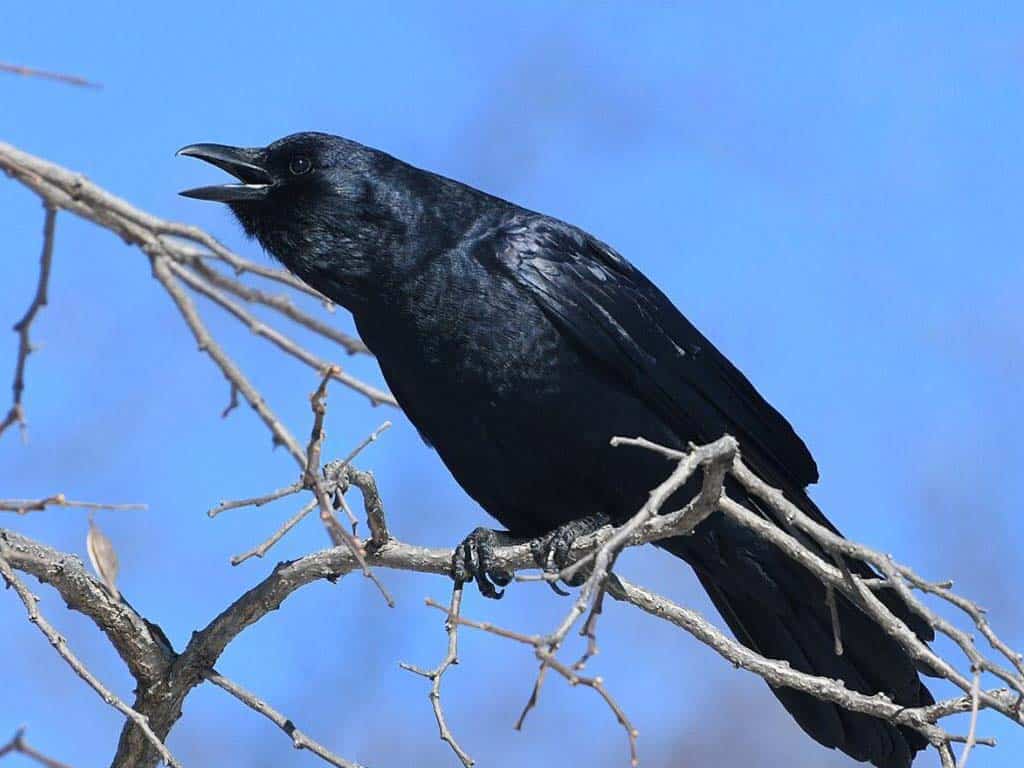
Fish Crows (Corvus ossifragus), found along the eastern and southeastern coasts of the United States, are smaller than their American Crow cousins but no less bold. They’re known to mob hawks that threaten their coastal habitats.
- Size: 14-16 inches long
- Wingspan: 33-35 inches
- Habitat: Coastal areas, beaches, and near water bodies
- Diet: Fish, crustaceans, eggs of other birds, and small animals
Check this out Why Do Hawks Screech? The Surprising Truth
Common Ravens: The Larger Cousins Joining the Fray
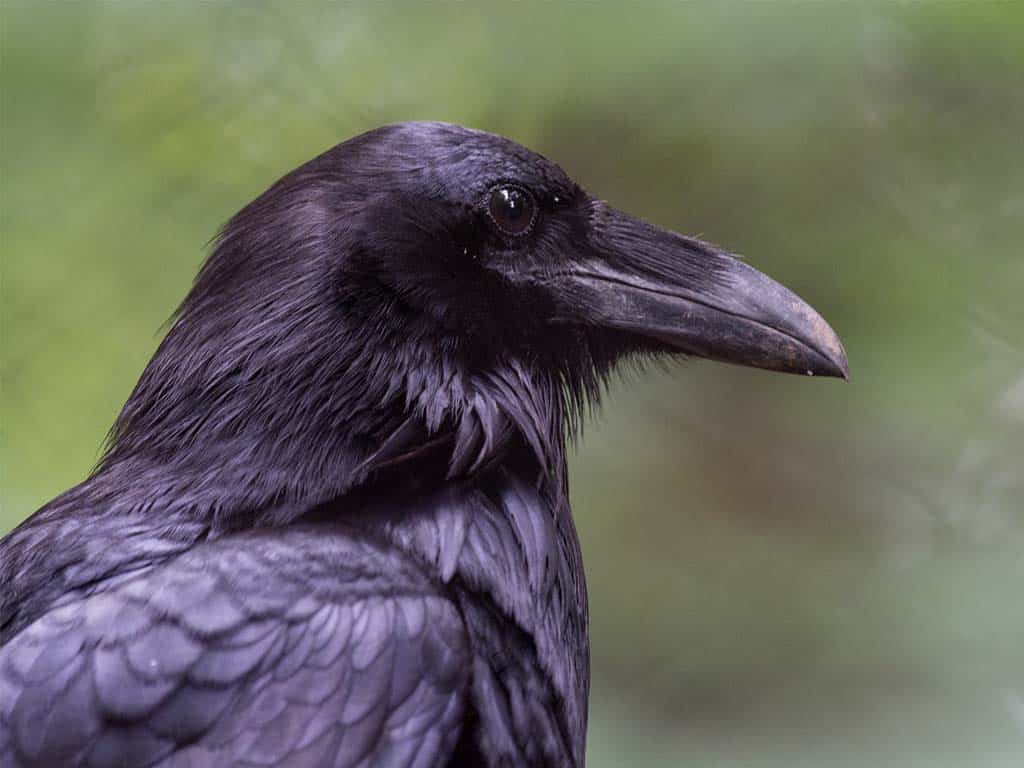
While not technically crows, Common Ravens (Corvus corax) are close relatives that also engage in mobbing behavior. Their larger size makes them formidable opponents for many hawk species.
- Size: 22-27 inches long
- Wingspan: 45-51 inches
- Habitat: Forests, mountains, and coastal areas
- Diet: Omnivorous – carrion, insects, small animals, and fruits
Global Examples: Crow Species Worldwide That Challenge Raptors
Crow-hawk interactions aren’t limited to North America. Here are some examples from around the world:
- Hooded Crows in Europe
- Jungle Crows in Asia
- Torresian Crows in Australia
Check this out Finches in Ohio: 9 Ohio Finches (With Photos)
Each of these species has been observed engaging in mobbing behavior against local raptor species, showcasing the universal nature of this corvid behavior.
The Rules of Engagement: Crow Tactics and Hawk Responses (do crows chase hawks)

When crows attack hawks, it’s not a chaotic free-for-all. There’s a method to their madness, and hawks have their own set of responses to these aerial assaults.
Aerial Acrobatics: How Crows Outmaneuver Hawks
Crows may not be as swift as hawks in straight-line flight, but they’re incredibly agile. They use quick turns, dives, and rolls to harass the hawk while staying just out of reach. This agility is crucial, as a direct confrontation could be fatal for the crow.
Crow Flight Tactics:
- Sharp turns and abrupt direction changes
- Rapid ascents and descents
- Coordinated movements with other crows
- Using terrain and obstacles to their advantage
Check this out Birds With Funny Names – The Complete List of Funny Bird Names
The Power of Noise: Cawing as a Weapon
One of the crows’ most effective tools is their voice. The constant, loud cawing serves multiple purposes:
- Disorient the hawk
- Alert other crows to join the mob
- Warn nearby animals of the predator’s presence
- Possibly communicate specific information about the threat to other crows
Tag Team Tactics: Coordinated Crow Attacks
Crows are social creatures, and their mobbing behavior often involves coordinated efforts. They may take turns diving at the hawk, attack from different angles simultaneously, or use decoy tactics to confuse their target.
Case Study: Coordinated Crow Attack In a 2018 study published in the Journal of Avian Biology, researchers observed a group of American Crows successfully driving away a Red-tailed Hawk from their nesting area. The crows used a combination of dive-bombing, vocal harassment, and coordinated attacks from multiple directions. The hawk was forced to retreat after just 3 minutes of intense mobbing.
Hawk Defense Mechanisms: When Predators Become Prey
Hawks aren’t defenseless in these encounters. They employ several strategies to deal with aggressive crows:
- Evasive maneuvers: Using their superior speed to outfly the crows
- Seeking cover: Diving into dense foliage to shake off pursuers
- Counter-attacks: Occasionally turning the tables on particularly bold crows
- Ignoring: Sometimes, hawks simply endure the harassment until the crows tire
“Hawks have evolved to deal with mobbing behavior,” explains Dr. John Marzluff, a wildlife biologist at the University of Washington. “While it’s annoying for them, it’s rarely life-threatening. Their best strategy is often to simply leave the area.”
Myths vs. Reality: Debunking Common Misconceptions
As with many aspects of nature, there are several myths surrounding the relationship between crows and hawks. Let’s separate fact from fiction:
Myth #1: Crows Regularly Kill Hawks
Reality: While crows can injure hawks, especially if they manage to knock them out of the air, fatalities are rare. The primary goal of mobbing is to drive the hawk away, not to kill it.
Myth #2: Crows Chase Hawks to Eat Them
Reality: Crows are opportunistic feeders, but they don’t typically prey on hawks. They might scavenge a hawk carcass if they come across one, but this isn’t a primary food source.
Myth #3: Hawks Regularly Prey on Adult Crows
Reality: While some larger hawk species might occasionally take an adult crow, it’s not common. Hawks are more likely to prey on crow eggs or nestlings.
Myth #4: Hawks Are Terrified of Crows
Reality: Hawks don’t fear crows in the same way prey animals fear predators. They often try to ignore mobbing crows and only leave an area if the harassment becomes too intense or persistent.
The Psychology Behind the Chase: Do Crows Really Hate Hawks?
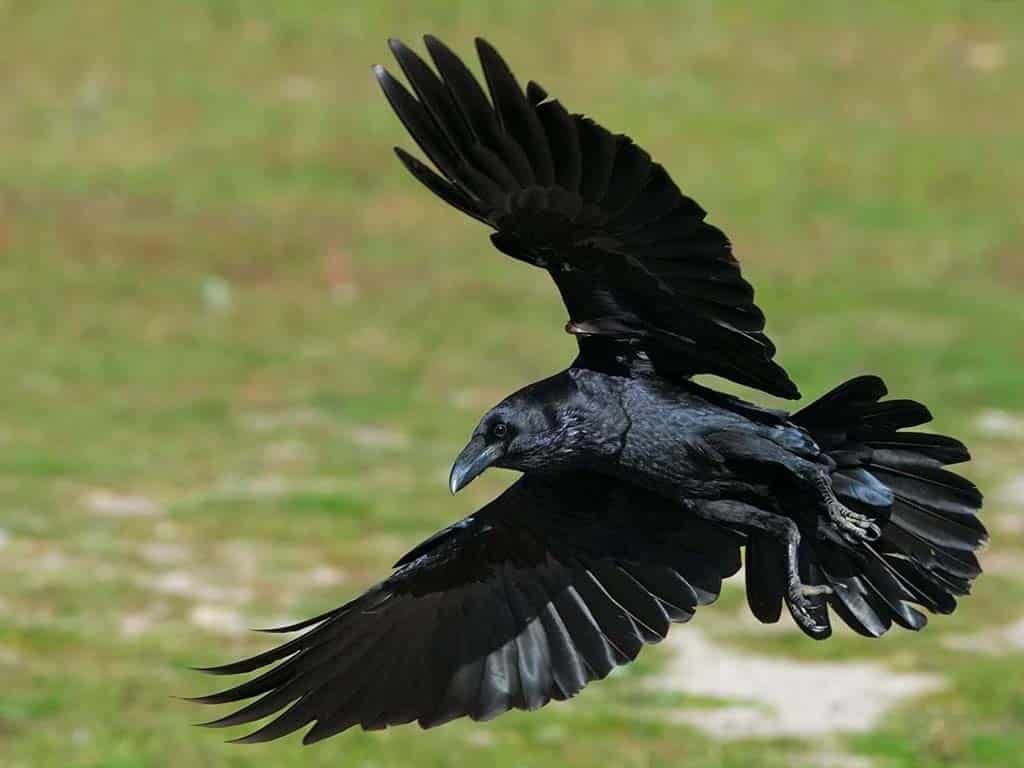
It’s tempting to anthropomorphize animal behavior, but do crows actually harbor negative emotions towards hawks? Let’s explore the cognitive aspects of this behavior.
Anthropomorphism: The Danger of Assigning Human Emotions to Birds
Crows chase hawks- While it might seem like crows “hate” hawks, it’s important to avoid projecting human emotions onto animal behavior. The interactions between these species are driven by instinct, learned behaviors, and survival strategies rather than complex emotions like hate.
Check this out Woodpeckers In Michigan – 8 Sensational Michigan Woodpeckers
Instinct vs. Emotion: What Drives Crow Behavior?
Crows’ responses to hawks are primarily instinctual, honed by evolution to protect themselves, their offspring, and their resources. This doesn’t mean crows don’t have emotions, but their reactions to hawks are more about survival than personal vendettas.
The Role of Learned Behavior in Crow-Hawk Interactions (do crows chase hawks)
Crows are intelligent birds with remarkable learning capabilities. Young crows observe and learn from their elders, including how to identify and respond to potential threats like hawks. This cultural transmission of knowledge plays a significant role in shaping crow behavior.
Fascinating Fact: Crows can recognize individual human faces and remember them for years. They’ve been known to hold grudges against humans who have wronged them, suggesting their ability to remember and respond to potential threats extends beyond just hawks.
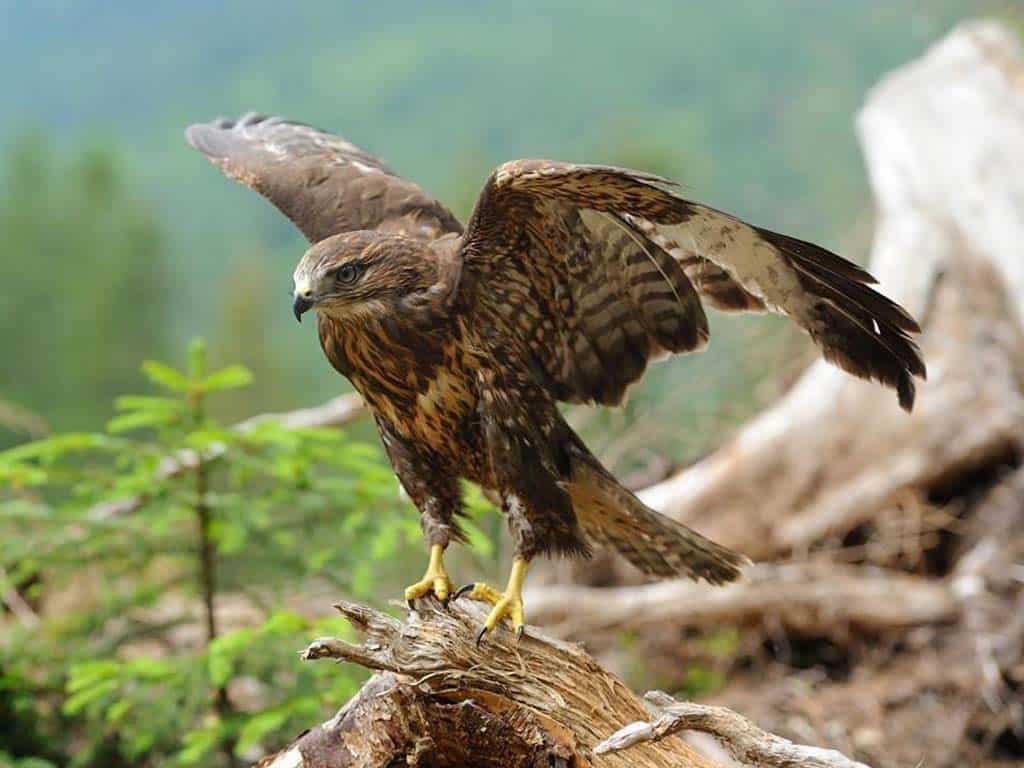
Cognitive Abilities of Crows: Problem-Solving in the Sky
Recent studies have shown that crows possess cognitive abilities rivaling those of great apes. Their problem-solving skills and tool use suggest a level of intelligence that goes beyond simple instinct. This cognitive flexibility likely contributes to their complex interactions with hawks and other potential threats.
Crow Intelligence Examples:
- Tool use for foraging
- Solving multi-step puzzles
- Understanding cause and effect
- Demonstrating self-awareness
Ecological Impact: The Bigger Picture of Crow-Hawk Dynamics
The interactions between crows and hawks aren’t just entertaining aerial displays; they play a crucial role in the broader ecosystem.
Balance in the Ecosystem: How These Interactions Shape Bird Populations
The dynamic between crows and hawks helps maintain a balance in bird populations. By mobbing hawks, crows may reduce predation pressure on smaller bird species, indirectly affecting the entire local ecosystem.
Urban Adaptation: Crow-Hawk Conflicts in Human-Altered Environments
As both crows and some hawk species adapt to urban environments, their interactions are evolving. Urban areas provide new challenges and opportunities for both species, potentially altering their traditional dynamics.
Urban Adaptations:
- Nesting on such as artificial structures
- Altered feeding patterns
- Changes in territory size and defense
- Increased tolerance of human presence
Climate Change Effects on Bird Behavior and Interactions
Climate change is altering habitats and migration patterns, which could impact the frequency and nature of crow-hawk encounters. As ranges shift and traditional territories change, we may see new patterns emerge in these aerial confrontations.
Potential Climate Change Impacts:
- Shifts in breeding seasons
- Changes in food availability
- Altered migration patterns
- Expansion or contraction of species ranges
Conservation Implications: Protecting Both Species in a Changing World
Understanding the complex relationships between different bird species is crucial for conservation efforts. Protecting both crows and hawks, along with their habitats, is essential for maintaining healthy, diverse ecosystems.
Witnessing the Drama: Tips for Birdwatchers
Crows chase Hawks- For those interested in observing these fascinating interactions firsthand, here are some tips:
- Best times: Early morning and late afternoon are often active periods for both crows and hawks.
- Locations: Look for areas where territories might overlap, such as the edges of forests or parks.
- Signs of impending chase: Listen for alarm calls from crows or watch for sudden, purposeful flight patterns.
- Equipment: Binoculars can help you spot and follow the action at a distance.
- Patience: These interactions can be brief, so be prepared to wait and watch.
- Record your observations: Consider contributing to citizen science projects by recording and sharing your sightings.
- Learn to identify different species: Familiarize yourself with local crow and hawk species to enhance your observations.
Remember to observe responsibly and avoid disturbing the birds or their habitats.
Conclusion: Do Crows chase hawks
Crows chase Hawks- The relationship between crows and hawks is a testament to the complexity of nature. Far from a simple predator-prey dynamic, it’s a nuanced interaction shaped by instinct, intelligence, and ecological factors. As we continue to study and observe these remarkable birds, we gain not only a deeper understanding of their behavior but also valuable insights into the intricate web of life that surrounds us.
The next time you see a group of crows chasing a hawk across the sky, take a moment to appreciate the drama unfolding before you. It’s not just a random act of aggression, but a glimpse into the sophisticated social structures and survival strategies that have evolved over millions of years.
In the end, the question “Why do crows chase hawks?” doesn’t have a simple answer. It’s a combination of territorial defense, opportunistic behavior, threat response, and perhaps a touch of avian bravado. This aerial chess match between corvids and raptors continues to fascinate scientists and bird enthusiasts alike, reminding us of the endless wonders waiting to be discovered in the natural world around us.
As we face challenges like habitat loss and climate change, understanding these complex interspecies relationships becomes even more critical. By appreciating and protecting the delicate balance between creatures like crows and hawks, we’re not just preserving individual species – we’re safeguarding entire ecosystems and the breathtaking biodiversity that makes our planet so extraordinary.
So the next time you hear a chorus of caws and spot a hawk being escorted out of the neighborhood by a squadron of crows, remember: you’re witnessing a small but significant chapter in the ongoing story of life on Earth. It’s a reminder of the intricate connections that bind all living things, and the endless fascination that nature provides for those willing to look up and observe.


